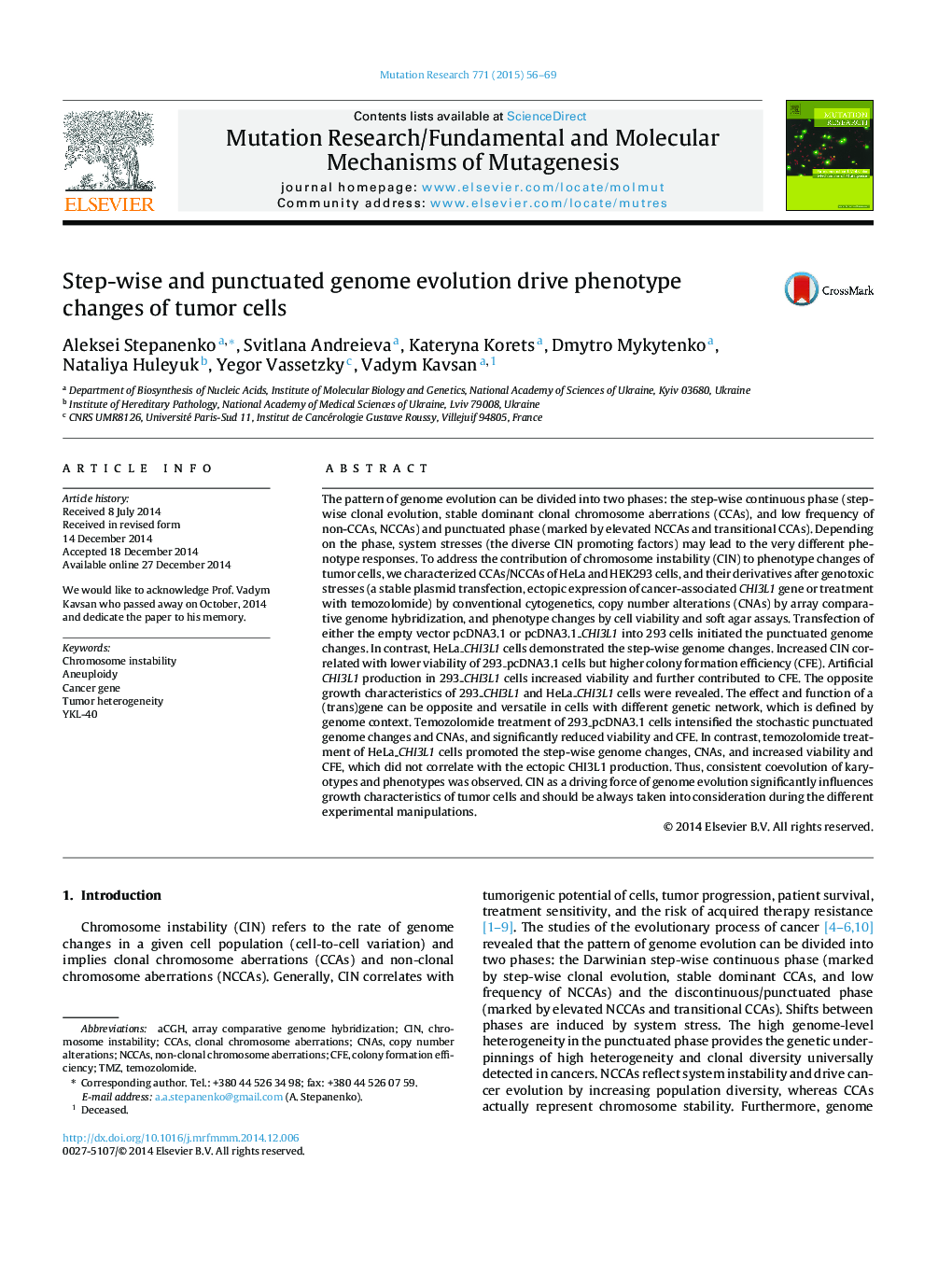| کد مقاله | کد نشریه | سال انتشار | مقاله انگلیسی | نسخه تمام متن |
|---|---|---|---|---|
| 2146204 | 1548328 | 2015 | 14 صفحه PDF | دانلود رایگان |
• There are the step-wise continuous and punctuated phases of cancer genome evolution.
• The system stresses during the different phases may lead to very different responses.
• Stable transfection of an empty vector can result in genome and phenotype changes.
• Functions of a (trans)gene can be opposite/versatile in cells with different genomes.
• Contextually, temozolomide can both promote and suppress tumor cell aggressiveness.
The pattern of genome evolution can be divided into two phases: the step-wise continuous phase (step-wise clonal evolution, stable dominant clonal chromosome aberrations (CCAs), and low frequency of non-CCAs, NCCAs) and punctuated phase (marked by elevated NCCAs and transitional CCAs). Depending on the phase, system stresses (the diverse CIN promoting factors) may lead to the very different phenotype responses. To address the contribution of chromosome instability (CIN) to phenotype changes of tumor cells, we characterized CCAs/NCCAs of HeLa and HEK293 cells, and their derivatives after genotoxic stresses (a stable plasmid transfection, ectopic expression of cancer-associated CHI3L1 gene or treatment with temozolomide) by conventional cytogenetics, copy number alterations (CNAs) by array comparative genome hybridization, and phenotype changes by cell viability and soft agar assays. Transfection of either the empty vector pcDNA3.1 or pcDNA3.1_CHI3L1 into 293 cells initiated the punctuated genome changes. In contrast, HeLa_CHI3L1 cells demonstrated the step-wise genome changes. Increased CIN correlated with lower viability of 293_pcDNA3.1 cells but higher colony formation efficiency (CFE). Artificial CHI3L1 production in 293_CHI3L1 cells increased viability and further contributed to CFE. The opposite growth characteristics of 293_CHI3L1 and HeLa_CHI3L1 cells were revealed. The effect and function of a (trans)gene can be opposite and versatile in cells with different genetic network, which is defined by genome context. Temozolomide treatment of 293_pcDNA3.1 cells intensified the stochastic punctuated genome changes and CNAs, and significantly reduced viability and CFE. In contrast, temozolomide treatment of HeLa_CHI3L1 cells promoted the step-wise genome changes, CNAs, and increased viability and CFE, which did not correlate with the ectopic CHI3L1 production. Thus, consistent coevolution of karyotypes and phenotypes was observed. CIN as a driving force of genome evolution significantly influences growth characteristics of tumor cells and should be always taken into consideration during the different experimental manipulations.
Journal: Mutation Research/Fundamental and Molecular Mechanisms of Mutagenesis - Volume 771, January 2015, Pages 56–69
